I get asked a lot or rather people will just say (rather than ask): “I don’t see how you do it. Teach all of them at different levels and ages. I couldn’t do it.”
{Deep breath.}
I don’t teach them all.
GASP. (Did any of you just gasp?)
Seriously, though, I do teach them all, but it probably doesn’t look like many of you might think. (Or maybe it looks worse LOL!)
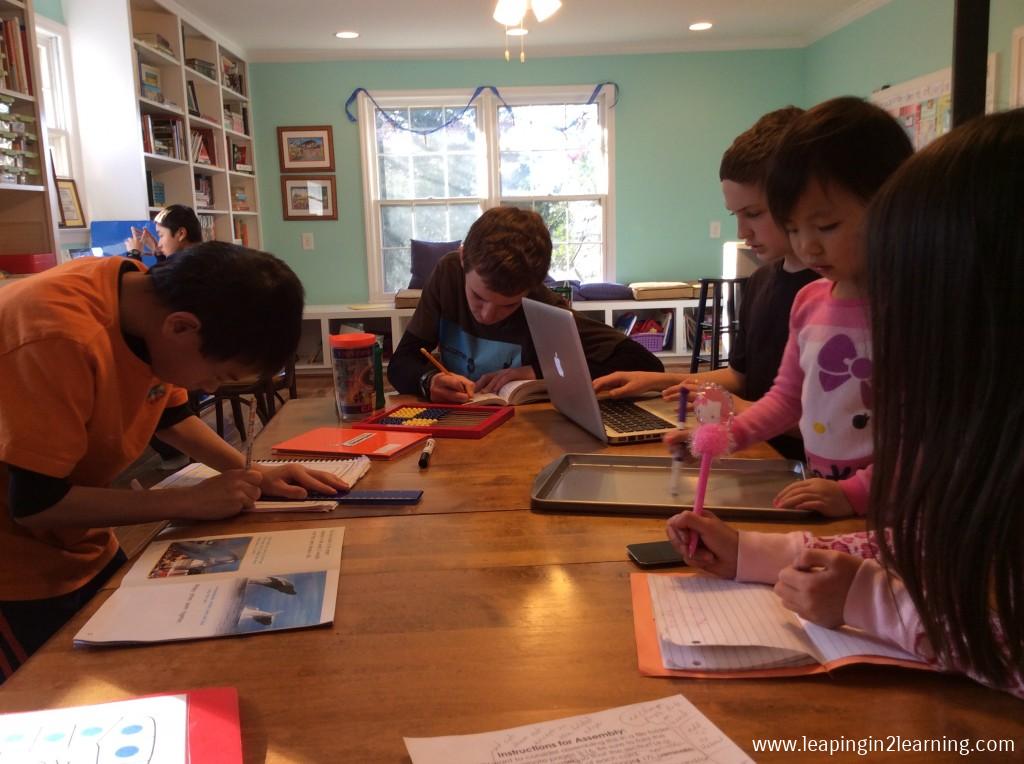 A LOT of self-directed learning happens in our one-room schoolhouse. This photo below shows a map our 6th grader drew of some of the property around us.
A LOT of self-directed learning happens in our one-room schoolhouse. This photo below shows a map our 6th grader drew of some of the property around us.
It wasn’t assigned or required, but I found it very impressive and is definitely an educational pursuit.
Our five oldest are attending a homeschool tutorial.
• Our high school student takes an English Lit. class and a Chemistry Class and Chemistry Lab there. Each of these classes last one hour.
• Our 7th grader takes history (which includes modern history in the world and the US; it is integrated and chronological), a writing course, Latin, a middle-school level chemistry and physics class, and LEGO robotics there.
• Our 6th grader takes history (which includes modern history in the world and the US; it is integrated and chronological), a writing course, world geography, a middle-school level chemistry and physics class, and LEGO robotics there.
LOOK at this map! He labeled it in its entirety FROM MEMORY. He drew the outlines of the continents and countries. The only thing on the page before he started were the dots you can see.
Here is a close crop of the labeled map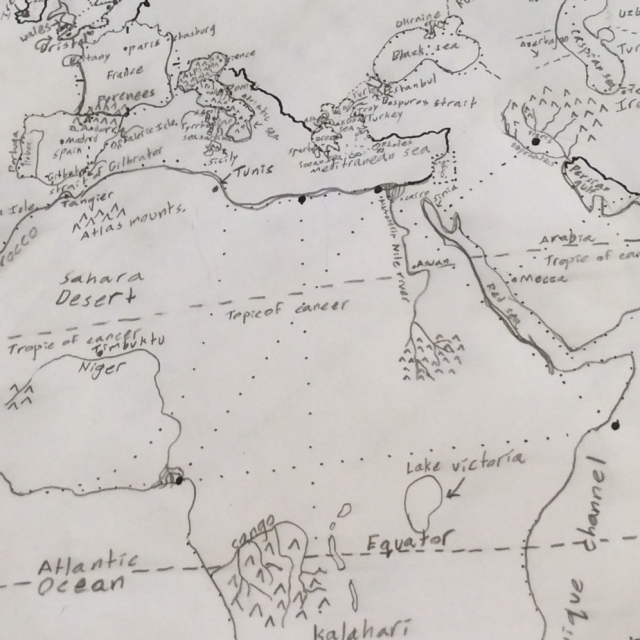 .
.
He will be able to label an entire globe when the class is over. Truth be told, he could already do a lot of this because we have always incorporated mapping memorization in our history lessons, but I am just very proud of what he has done here.
**And to note, the 6th grader and 7th grader do share texts for the history and science courses, but they are not in the same class. They are in the same Robotics class at the end of the day.
• Our 2nd graders take history (which includes modern history in the world and the US; it is integrated and chronological), music, elementary physics, Spanish, and DD takes an American Girl reading course while DS takes private speech therapy with our ST who meets us there the last hour.
In their science class, they each did a Simple Machines project. I’m so bummed but as of yet, I can’t find the photo of DS’s project. This is a shot of DD’s project in progress (I’m afraid I didn’t get a photo of either project finished, but they were very cool!).
So, having shared all of that, these classes do dictate a lot of our learning on Mondays-Wednesdays as we complete assignments for these classes. I teach them math or rather in many instances I oversee their math learning.
Some are working in their textbooks, while others are going around the room working problems on cards I’ve posted around the room (thanks to the 2012 TpT Holiday eBook).
I will probably share what that looks more like in a separate post, but I just wanted to share that in our homeschool my students are often found learning on their own with me nearby to lead and assist as needed.
I am more of an overseer especially for our older three. I am there to assist or more often than not with my algebra student to help him FIND the answer (as math is not my strong suit). The Prez has a minor in math, so that is always an option in the evening as well (for Dad to help them figure it out).
The point is that I don’t spend 7 hours a day teaching each of them. I don’t even spend 4 hours a day with each of them individually, but they wouldn’t be getting that in a brick-and-mortar school either.
Let me interject this isn’t an either/or post as I’ll be sharing soon more details about the fact that my student count will be less next year as two of my students will go to the brick-and-mortar school to be taught by others.
Rather this post will hopefully shed some light for others on what our homeschool looks like. Just as with teaching styles, differences abound in homeschool rooms too. We don’t do it the right way or the only way; this is just what is working for our family and our one-room schoolhouse (which can also be found sometimes in the living room rather than the library).
I am often asked, “Well, what is your three-year-old doing while you are teaching the others?”
She works puzzles.
She goes on scavenger hunts for letters of the alphabet …
… and puts them into the right spots, and names them for me one-by-one!
She plays with her beloved sensory tubs.
She paints!
She uses busy bags for some math and number sense fun.
Our days are never boring, and our days are never complete.
Our days seem never-ending and sometimes can’t end soon enough!
Our days are full.
Of learning.
Of love.
Of life.
Of lessons.
Of recess.

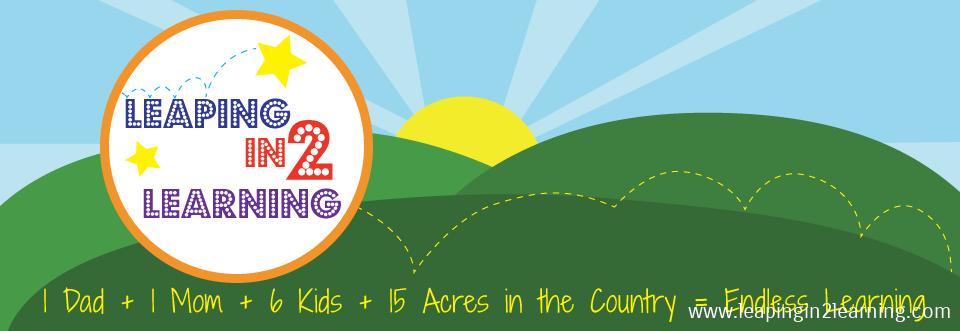

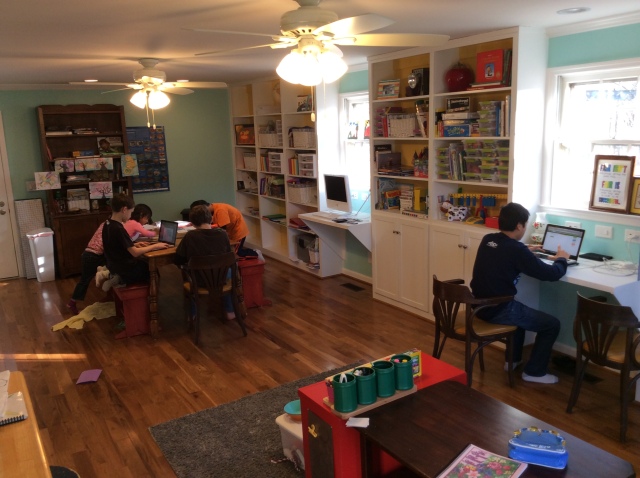
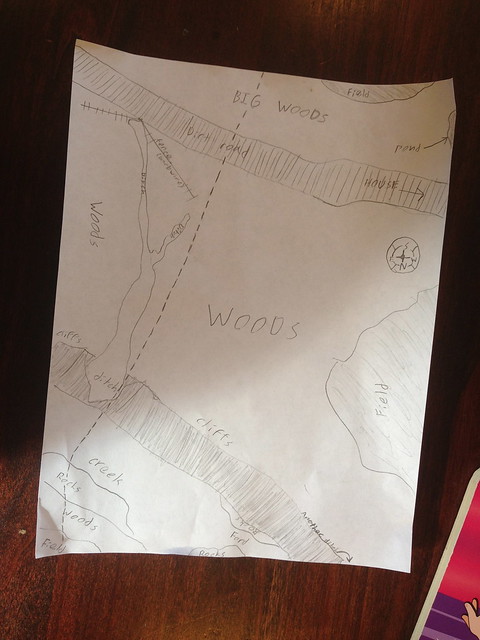



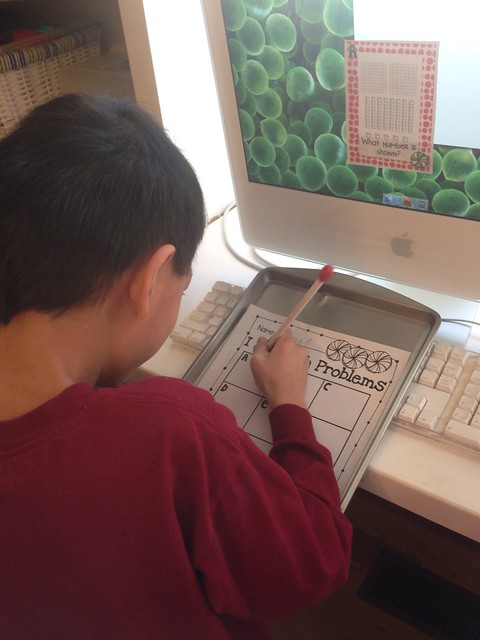
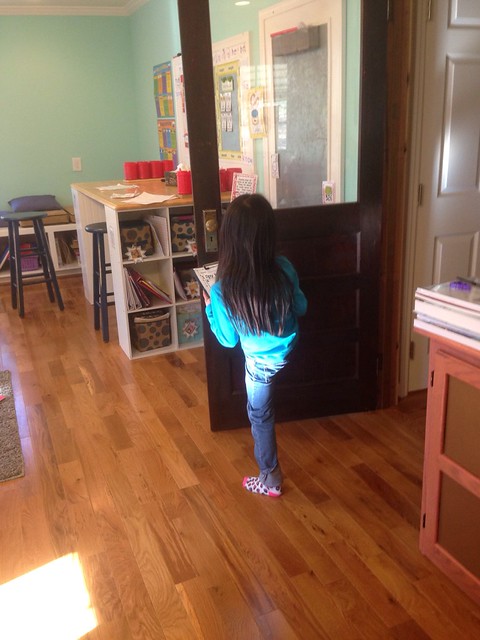
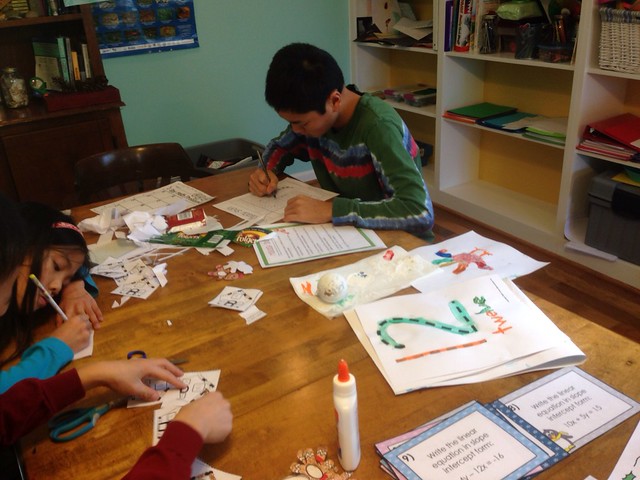
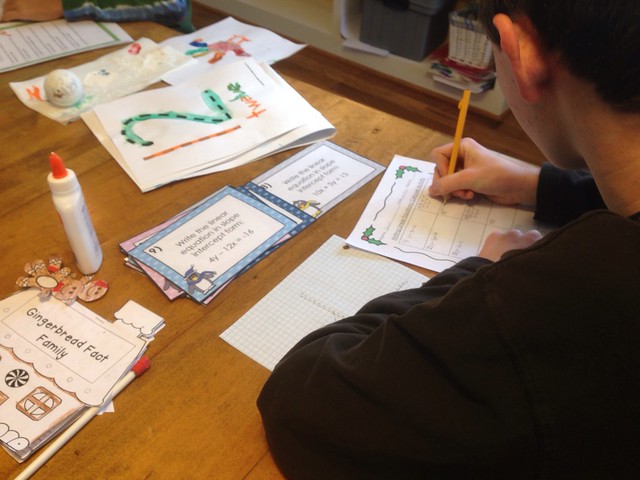
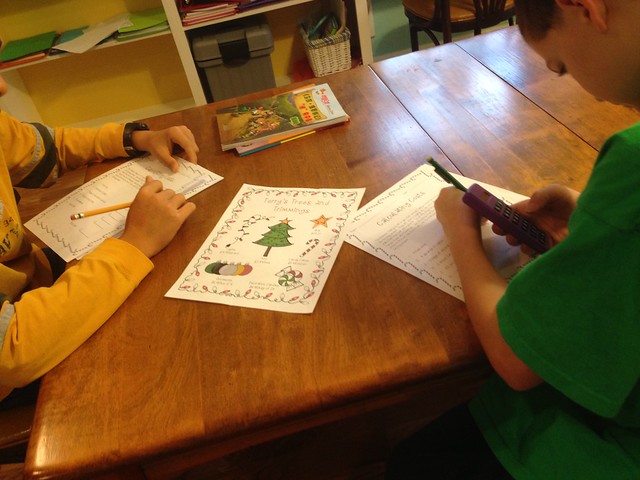
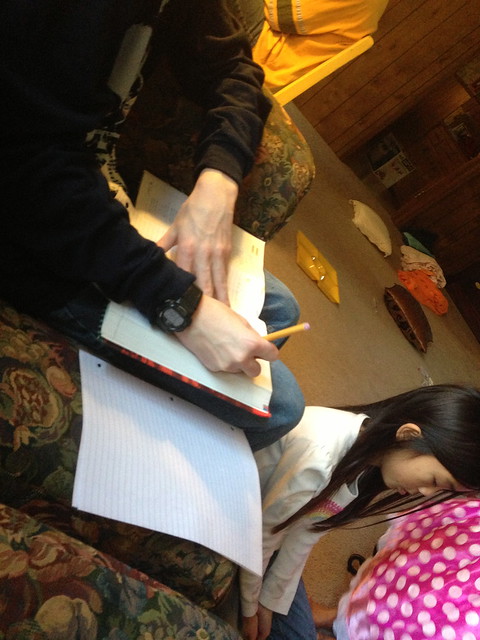
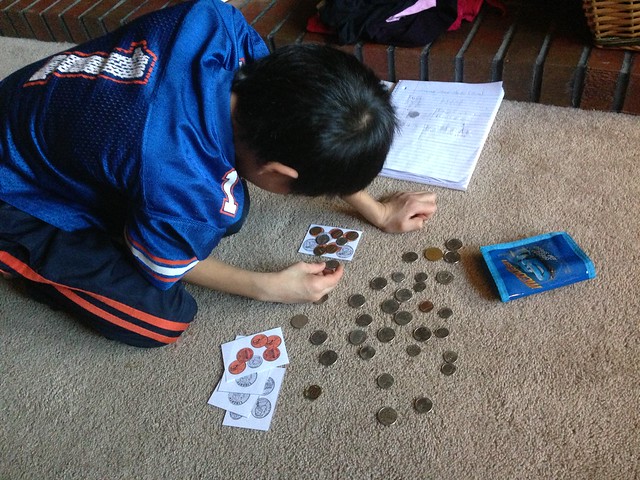





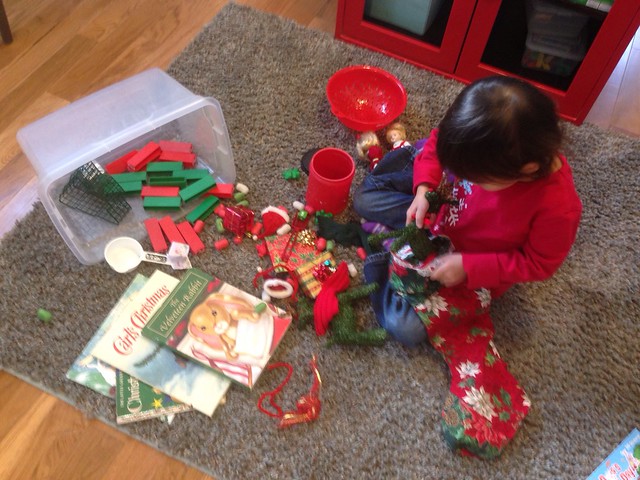
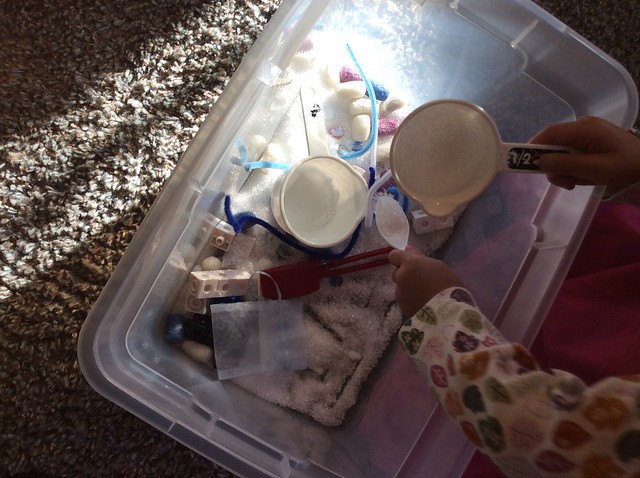

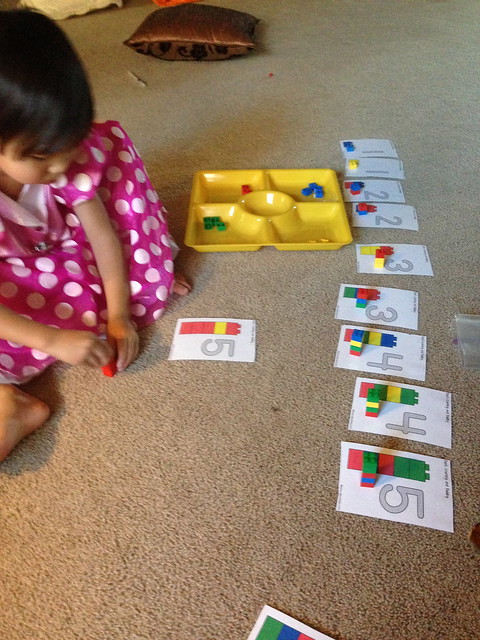
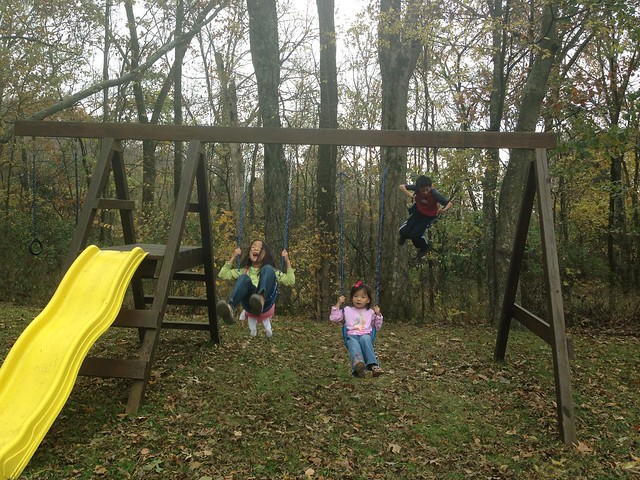
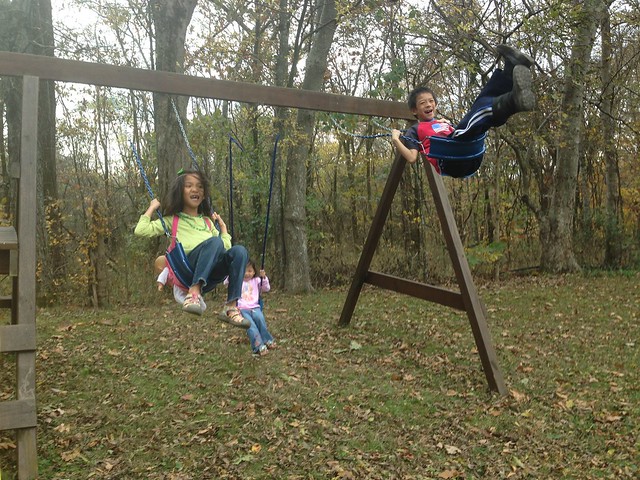
Oh, Leslie! This post is so inspiring! I admire you for the dedication that you have for your family!
The year I home schooled my eldest, I had people asking me how I did it too, lol!
I love it, and I am amazed at how fantastic your schoolroom looks. Well done its a work of art.
I’m still jealous of your gorgeous homeschool room! Sounds like you have a great Co-op there!
Thanks for sharing 🙂 We’re just starting on our home-school journey (2 pre-schoolers this year), so I love reading how families with more kiddos and older kiddos do school! And I’m looking forward to hearing about your decision to send 2 of your kids to school outside of the home next year – our default thought is that we will home-school through high school, but we hope we’ll know if that’s ever not the right thing for us or our kids, so I’m always really interested in hearing how others make those choices as their kids get older!
Pingback: What Is Homeschooling … With a Three-Year-Old in the Mix! | Leaping into Learning
Leslie, I just love your blog. I am a classroom teacher, but I am a HUGE proponent of incorporating hands-on materials and activities, as well as self-exploration and discovery. These are the things that make learning truly meaningful. I have taught in a multi-age classroom before, and I can very much appreciate the difficulty and the fun of planning for multiple ages and ability levels. I know that every time I come here, I will find a brilliant new idea for a hands-on exploratory way to teach a topic that we are working on right now. I already have my Valentine’s Day lessons planned from ideas you have shared. Thank you!
Pingback: The Decision to Not Homeschool | Leaping into Learning